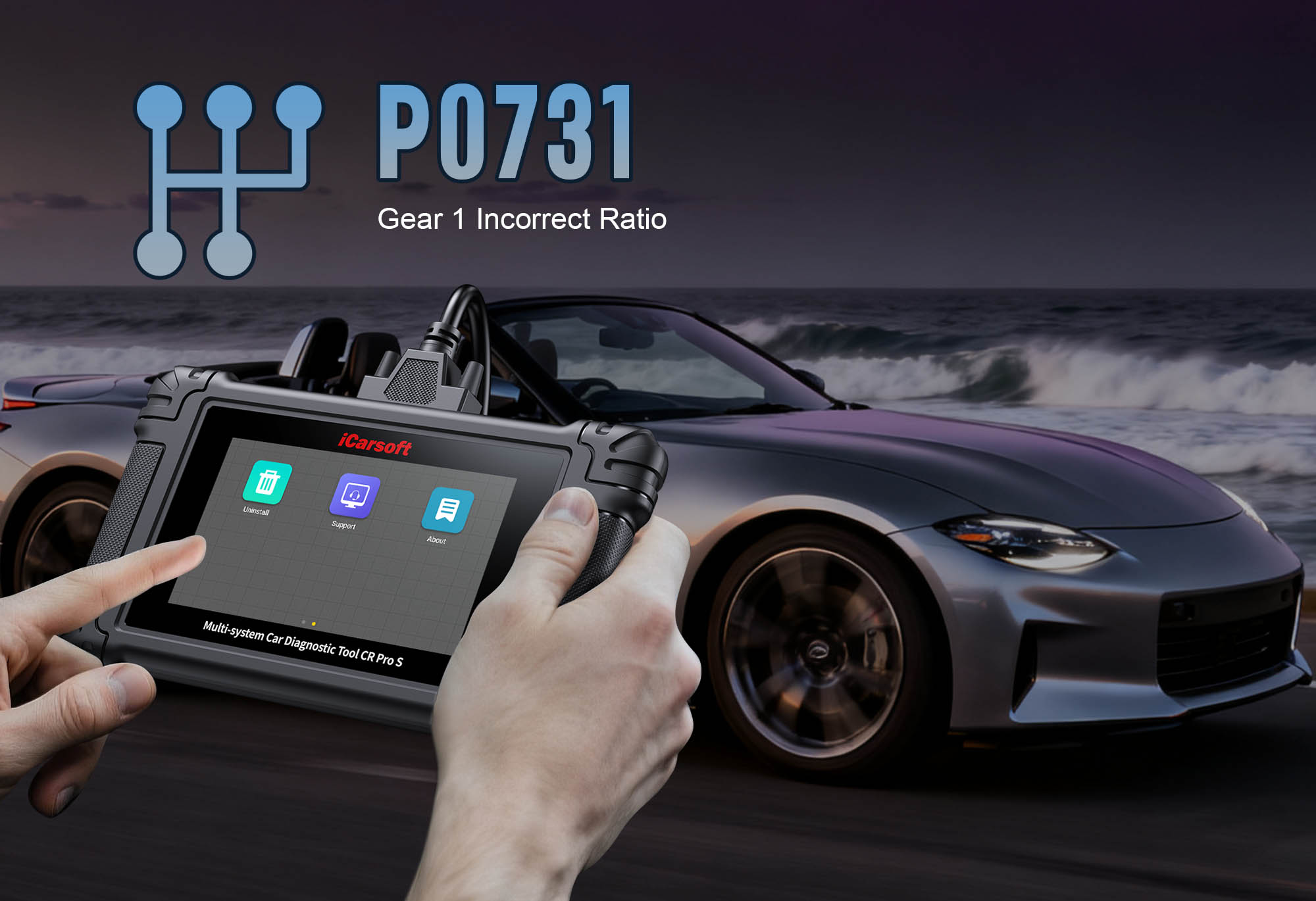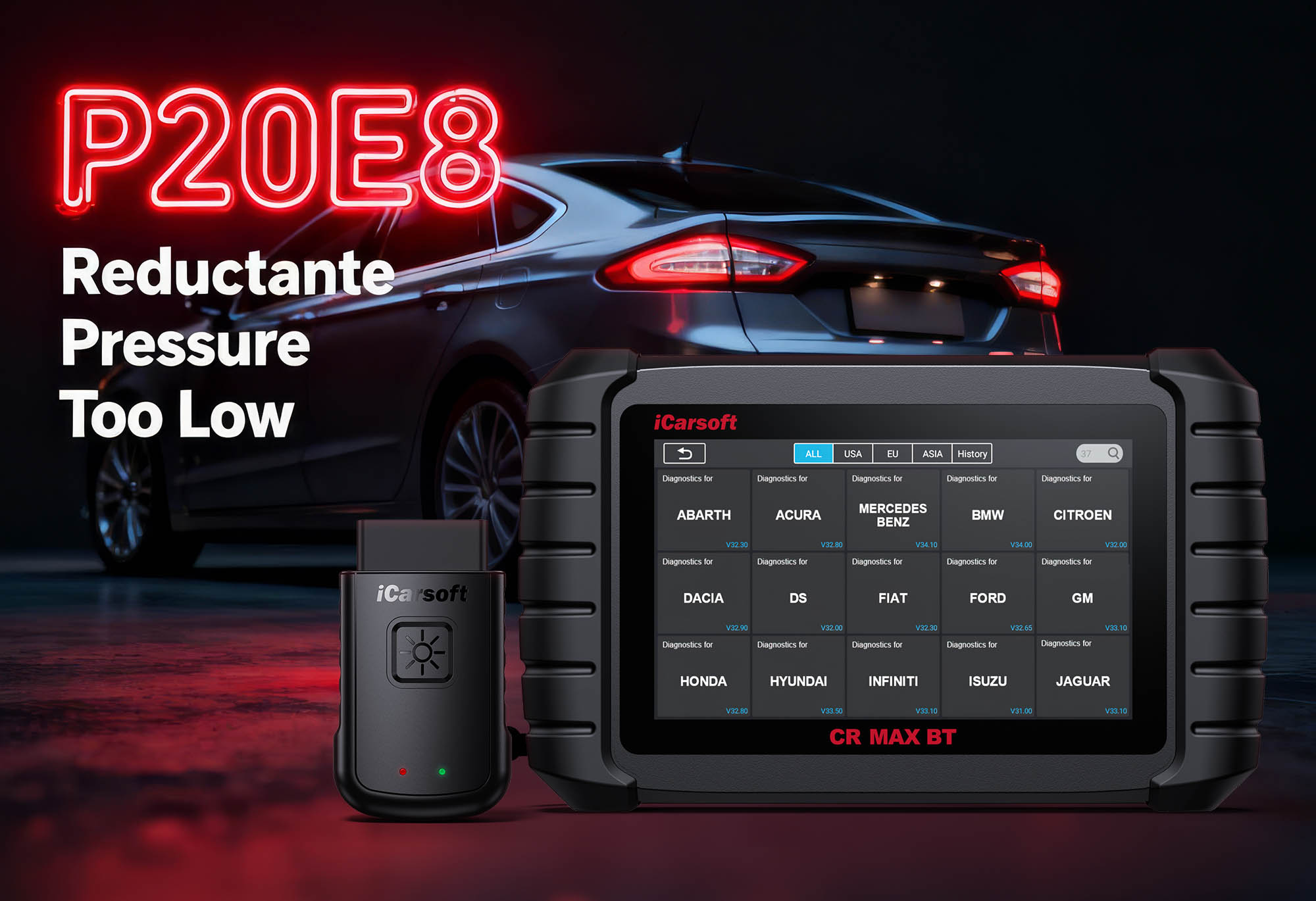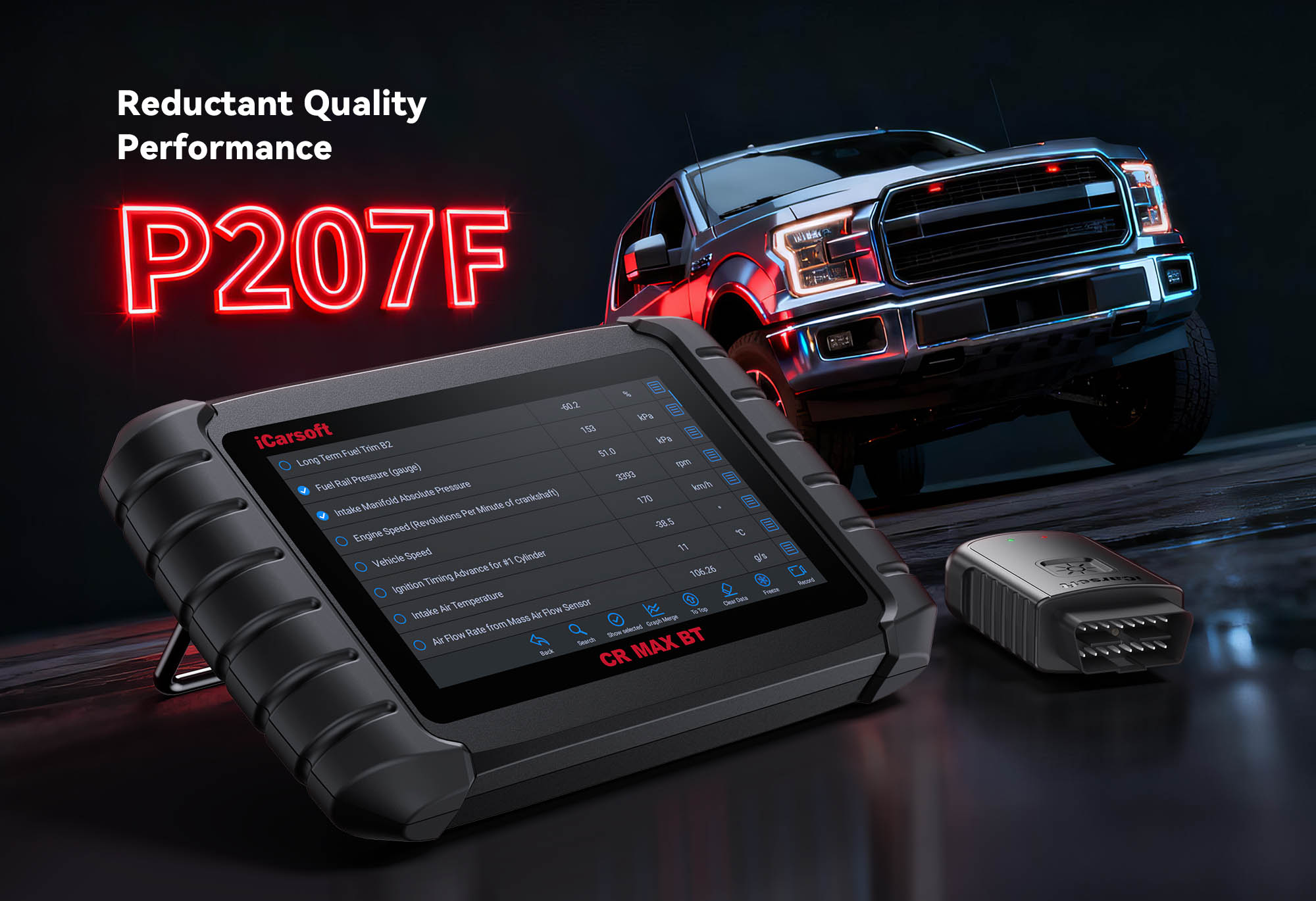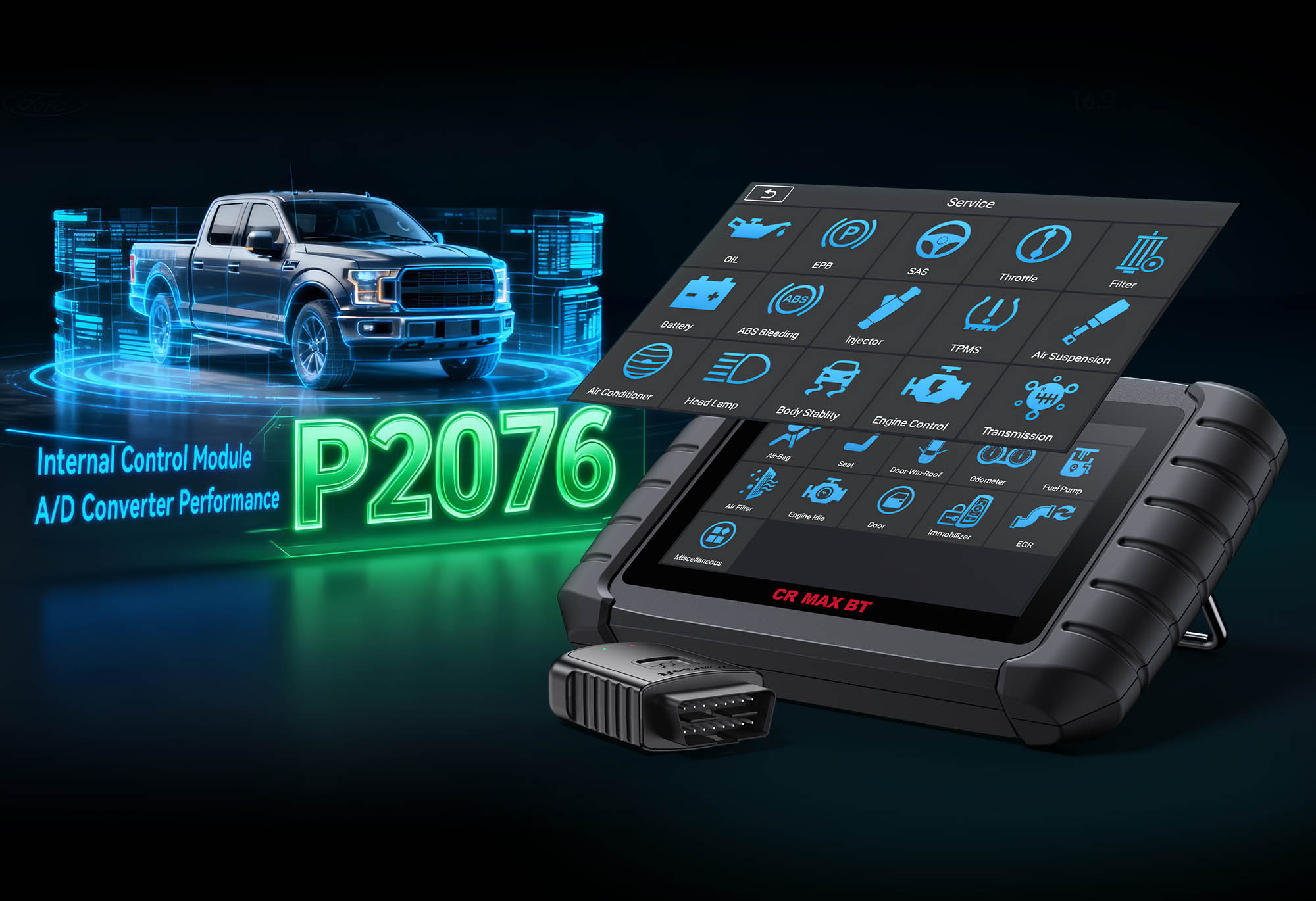Diagnose & Clear P0731 with iCarsoft CR Elite P: Fix Transmission Gear 1 Incorrect Ratio
Diagnose & Clear P0731 with iCarsoft CR Elite P: Fix Transmission Gear 1 Incorrect Ratio
If your check engine light illuminates, your vehicle struggles to accelerate from a stop, or you hear grinding noises during low-speed shifts, a diagnostic scan will likely return P0731. This OBD-II code stands for "Transmission Gear 1 Incorrect Ratio"—a critical fault indicating the Transmission Control Module (TCM) has detected a mismatch between the engine’s speed (RPM) and the transmission’s output speed when in first gear. This mismatch means the transmission isn’t properly engaging first gear, leading to poor performance, increased wear, and eventual transmission failure if ignored.
First gear is essential for low-speed acceleration, so a faulty ratio disrupts basic driving functionality. Basic scanners fall short, but the iCarsoft CR Elite P—with specialized transmission diagnostics and live speed tracking—solves this. Let’s walk through how to diagnose and resolve P0731 with precision.
Understanding P0731: Causes & Key Symptoms
An incorrect first gear ratio stems from the transmission’s inability to transfer engine power efficiently in low gear. Symptoms worsen over time, damaging critical components:
Key Symptoms of P0731
-
Check Engine Light + Transmission Warning Light: The CEL triggers for P0731, while a "Transmission Fault" light signals TCM limp mode (disables first gear).
-
Slow Acceleration from Stop: The vehicle hesitates or crawls when starting—first gear fails to multiply engine torque.
-
Grinding/Whining Noises: Worn clutches or misaligned gears cause metal-on-metal contact (grinding) or low-fluid whining.
-
Transmission Slipping: Engine revs high (e.g., 3,000 RPM at 10 mph) but speed doesn’t increase—power isn’t transferred to wheels.
-
Limp Mode Activation: TCM limits the transmission to 2nd/3rd gear, capping speed at 30–40 mph to prevent damage.
-
Increased Fuel Consumption: The engine works harder to compensate for slipping, raising fuel usage by 15–20%.
Common Causes of P0731
|
Cause
|
Description
|
|
Low/Contaminated Transmission Fluid
|
Insufficient fluid or sludge prevents clutch engagement—first gear can’t lock into place (most common cause).
|
|
Worn First Gear Clutches/Bands
|
Friction material wears thin (common in vehicles >120,000 miles), causing slipping and ratio mismatch.
|
|
Faulty Input/Output Speed Sensors
|
Sensors send incorrect RPM data to the TCM, leading to miscalculated gear ratios.
|
|
Clogged Transmission Valve Body
|
Debris blocks the valve controlling first gear pressure, preventing full gear engagement.
|
|
TCM Software Glitch
|
Outdated firmware (2016+ vehicles) misinterprets speed data, triggering false P0731 codes.
|
|
Mechanical Gear Damage
|
Broken teeth on first gear gears (rare but severe) prevent proper meshing, disrupting the ratio.
|
Why iCarsoft CR Elite P Excels at Diagnosing P0731
The CR Elite P outperforms basic tools with features tailored to transmission gear ratio diagnostics:
Live Input/Output Speed Tracking
Monitors real-time RPM from engine (input) and transmission output shaft, calculating actual vs. target gear ratio.
Transmission Pressure Tests
Measures hydraulic pressure in first gear circuit—low pressure = clogged valves; normal = mechanical wear.
Bi-Directional TCM Testing
Forces first gear engagement to verify transmission response, ruling out TCM logic errors.
AutoVIN Identify
Retrieves vehicle/transmission specs (e.g., Ford 6R80, Toyota U660E) to access gear-specific target ratios.
Global Vehicle Coverage
Works with 500+ models (gasoline/diesel/hybrid) and supports automatic, semi-automatic, and DCT transmissions.
Lifelong Free Updates
Installs TCM firmware fixes (e.g., GM 2019+ gear ratio calibrations) to resolve false P0731 codes.
Step-by-Step: Diagnose P0731 with iCarsoft CR Elite P
-
1. Check Transmission Fluid Level & Condition
Start with the simplest fix—low/dirty fluid causes 40% of P0731 cases:
1. Fluid Level Check: - Park on level ground, idle 5–10 minutes (warms fluid for accurate reading).
- Locate dipstick via Component Location > Transmission > Dipstick or use electronic level test (no-dipstick vehicles).
- Add correct fluid (e.g., Dexron VI) if below "Hot" mark (check Fluid Guide).
2. Fluid Condition Inspection: - Healthy fluid = bright red/pink, slight sweet smell.
- Dark brown/black fluid with particles = change fluid + filter immediately (sludge clogs valves).
-
2. Connect the CR Elite P & Confirm P0731
1. Plug into OBD-II port (use adaptors for OBDI vehicles like old Mercedes/BMW).
2. Select AutoVIN Identify to detect transmission type/TCM version.
3. Navigate to Transmission > Fault Codes to confirm P0731—check Code Details for specs (e.g., "Toyota U340E: Target Ratio 2.84:1").
4. Resolve related codes (P0715/P0720 = speed sensor faults) first.
-
3. Analyze Live Gear Ratio Data
Real-time data distinguishes electrical vs. mechanical issues:
1. Start engine, put in "Drive" (parking brake engaged).
2. Navigate to Transmission > Live Data > Gear Ratio and monitor:
- Input Speed: Engine RPM (e.g., 800 RPM at idle).
- Output Speed: Transmission RPM (e.g., 280 RPM = 2.84:1 ratio).
- Calculated Ratio: 10%+ higher than target = P0731 confirmed.
3. Key Observations:
- Low output speed = mechanical issue (clutches/valves).
- Erratic speeds = sensor fault.
-
4. Test Input/Output Speed Sensors
Faulty sensors are a top fix—verify functionality:
1. Locate sensors via Component Location > Transmission > Speed Sensors (input = torque converter; output = driveshaft).
2. Resistance Test: - Disconnect connector, use multimeter (Ohms) to measure pins—normal = 500–1,500 ohms.
- Out-of-range = replace sensor.
3. Signal Test: - Reconnect, accelerate to 10 mph—signals should rise smoothly (erratic = faulty sensor).
-
5. Perform Transmission Pressure Test
Identify hydraulic issues without teardowns:
1. Navigate to Special Functions > Transmission > Pressure Test (supported on 48+ makes).
2. Activate first gear circuit—pressure should read 80–120 psi.
3. Low Pressure (<60 psi): Flush transmission or repair valve body.
4. Normal Pressure: Worn clutches/gears (consult specialist).
-
6. Update TCM Firmware (If Sensors/Pressure Are Good)
Fix software-related false codes:
1. Connect to Wi-Fi via System > Wi-Fi Settings.
2. Go to System > Update Manager > TCM Firmware.
3. Install latest update (e.g., "Ford F-150 2017–2022: Gear 1 Calibration").
4. Clear P0731 and restart engine.
-
7. Repair & Clear P0731
Fix root cause based on diagnostics:
1. Address issues:
- Fluid/Filter: Replace and use Transmission Fluid Reset.
- Sensors: Install OEM sensors (use Part Lookup).
- Valve Body: Flush or replace.
- Clutches/Gears: Consult transmission specialist.
2. Clear code via Transmission > Fault Codes > Clear Codes.
-
8. Validate the Repair
Ensure first gear functions correctly:
1. Test first gear engagement—no hesitation/grinding from stops.
2. Test drive 30–40 minutes (low-speed + highway on-ramps):
- No slipping; smooth shift to 2nd gear.
3. Post-drive scan: Use Transmission System Scan after 100 miles.
4. (Optional) Run I/M Readiness Test for emissions compliance.
Preventing P0731 Recurrence
Use the CR Elite P to maintain transmission health:
-
Regular Fluid Changes: Schedule every 60,000–80,000 miles (use Service Reminder).
-
Speed Sensor Checks: Clean connectors during annual maintenance (use Sensor Test).
-
Avoid Aggressive Driving: Hard acceleration strains first gear clutches (monitor via Driving Habit Tracker).
-
TCM Updates: Enable auto-updates to install fixes promptly.
Conclusion
P0731’s first gear ratio fault disrupts basic driving and threatens transmission life—but the iCarsoft CR Elite P simplifies diagnosis with live tracking, pressure tests, and sensor verification. Whether fixing fluid issues or identifying sensor faults, this tool ensures you address the root cause, not just the symptom.
For DIYers and professionals, the CR Elite P’s global coverage and lifelong updates make it the ideal tool for resolving P0731. Restore smooth first gear engagement, protect your transmission, and drive with confidence.
FAQs About P0731 Code
Q: Can I drive with P0731?
A: Only short distances to a shop. Prolonged driving causes clutch wear and overheating—stop if you hear grinding or notice slipping.
Q: How much does it cost to fix P0731?
A: $100–$300 for fluid/filter; $80–$200 for sensors; $500–$1,200 for valve body repair; $1,500–$3,000 for clutch rebuild. The CR Elite P saves by avoiding unnecessary repairs.
Q: Why does P0731 return after fluid change?
A: Likely unresolved issues—worn sensors, clogged valve body, or TCM glitches. Use the CR Elite P to retest speed sensors and run a pressure test.
Q: What’s the difference between P0731 and P0732?
A: P0731 = first gear incorrect ratio; P0732 = second gear incorrect ratio. The CR Elite P distinguishes them via live gear ratio tracking.





